
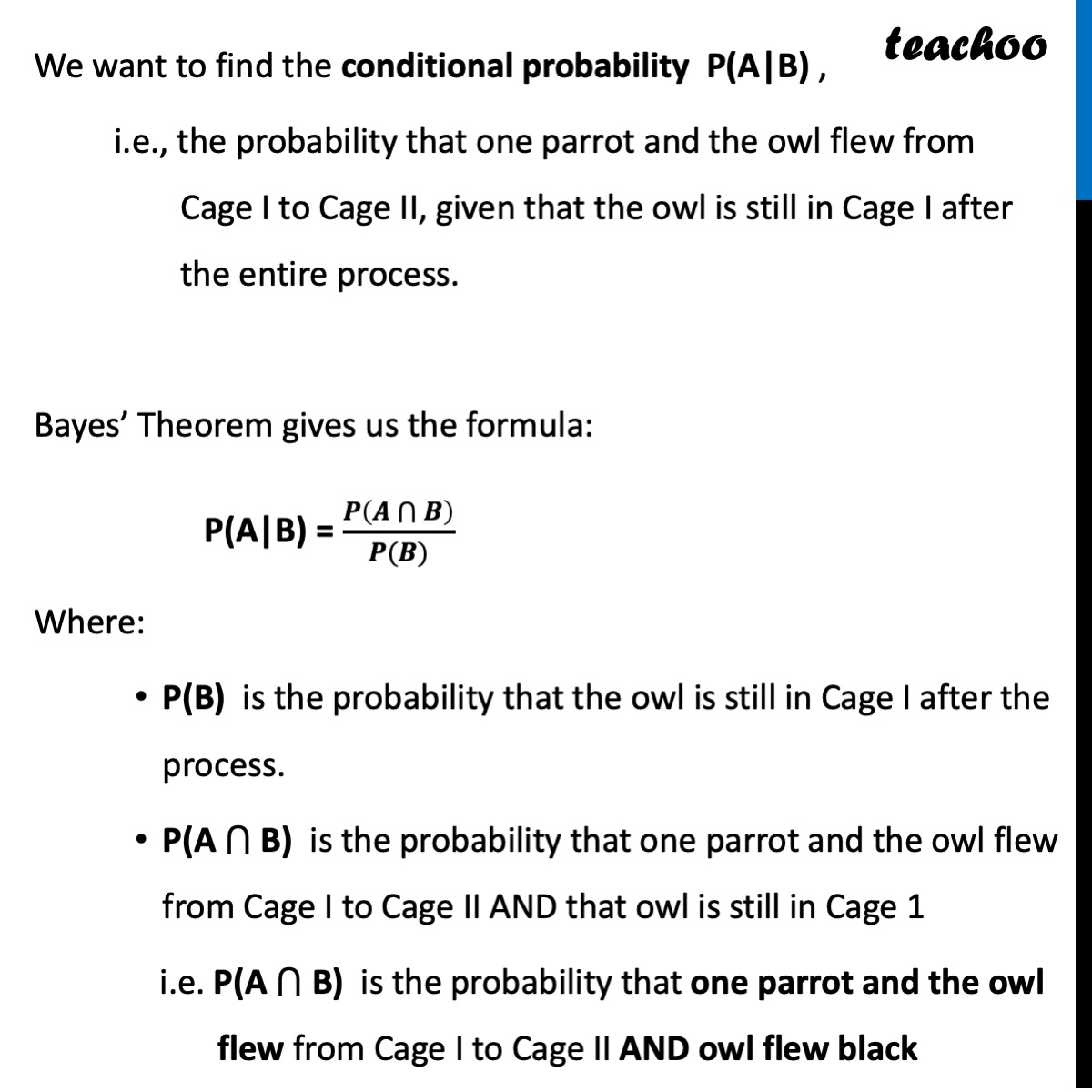
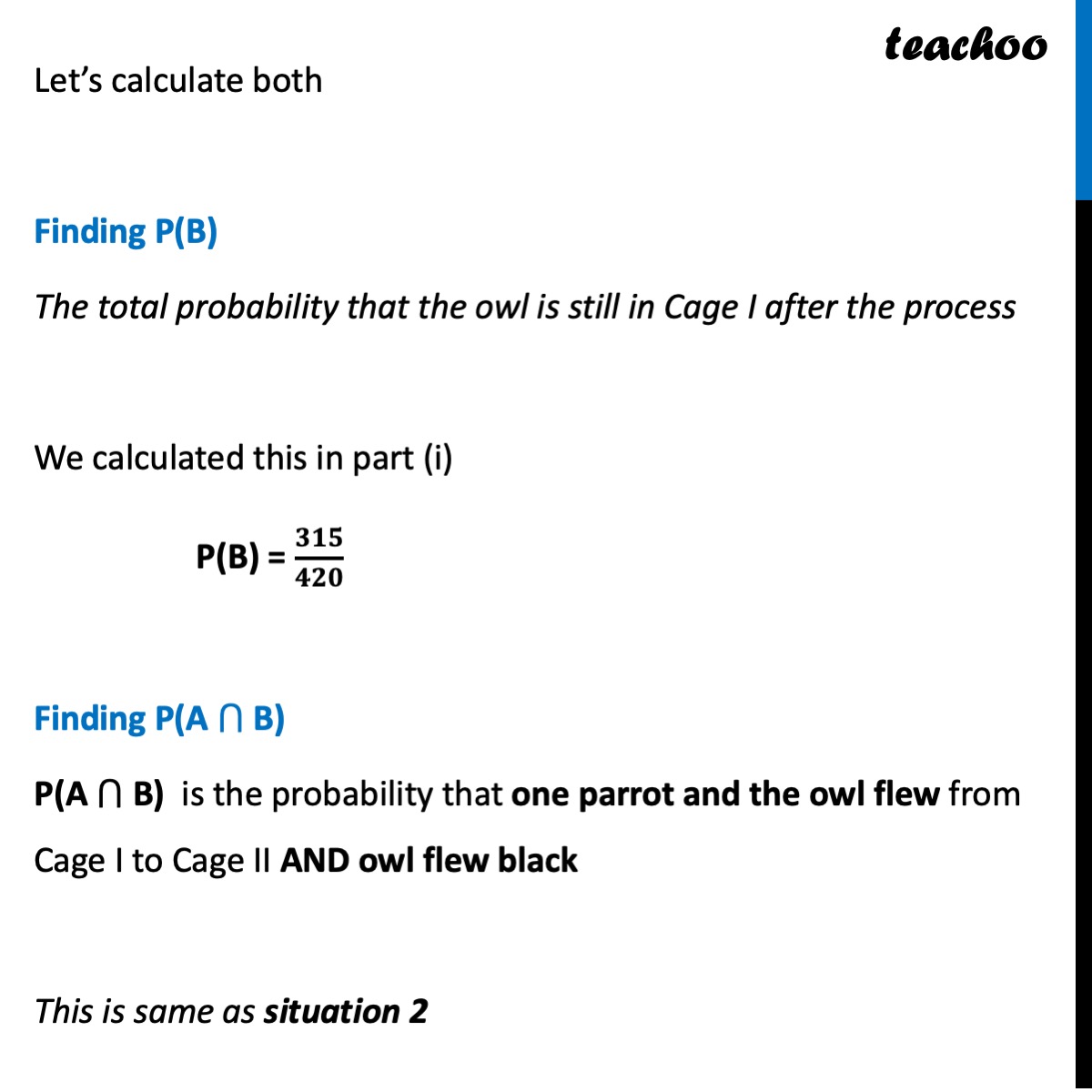
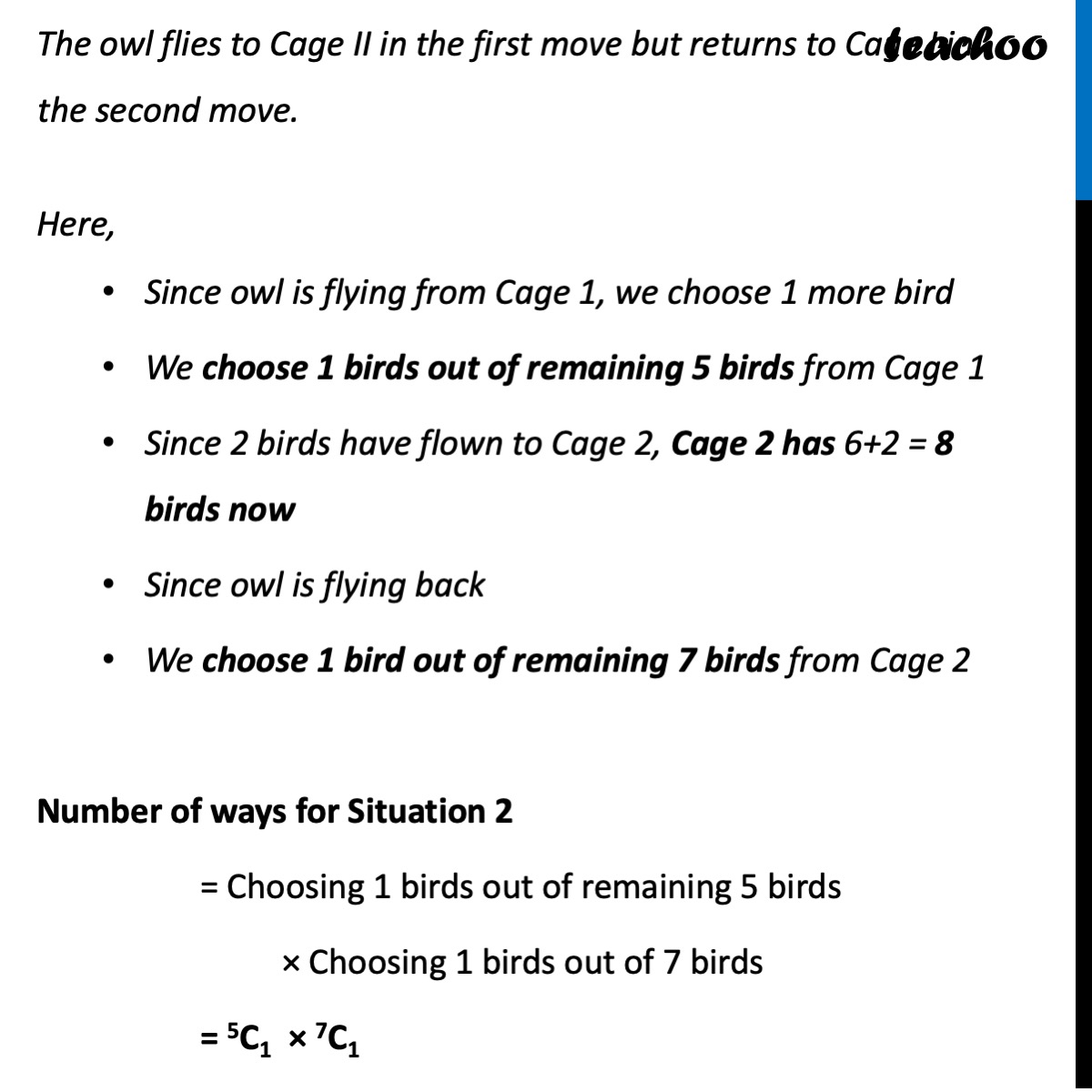
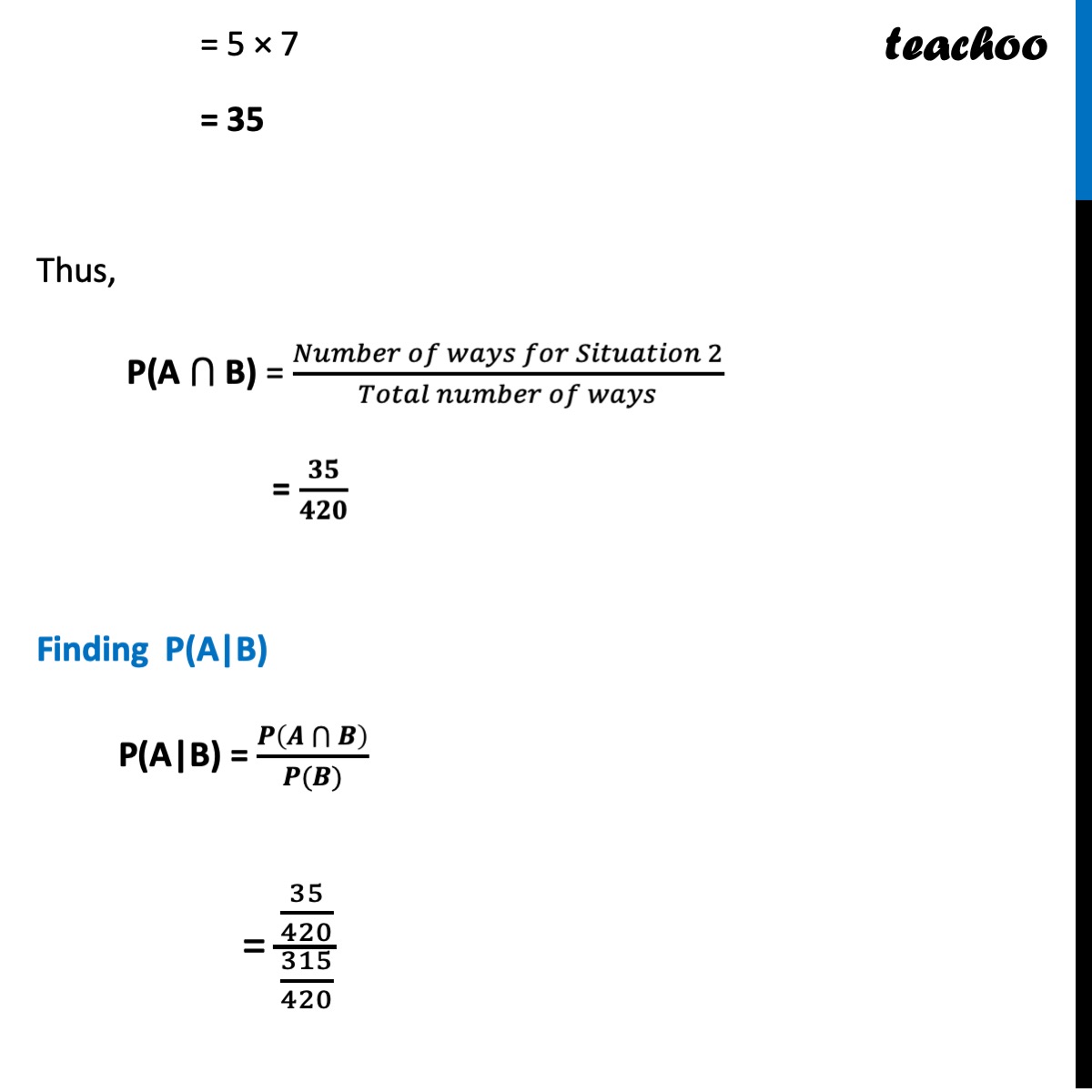
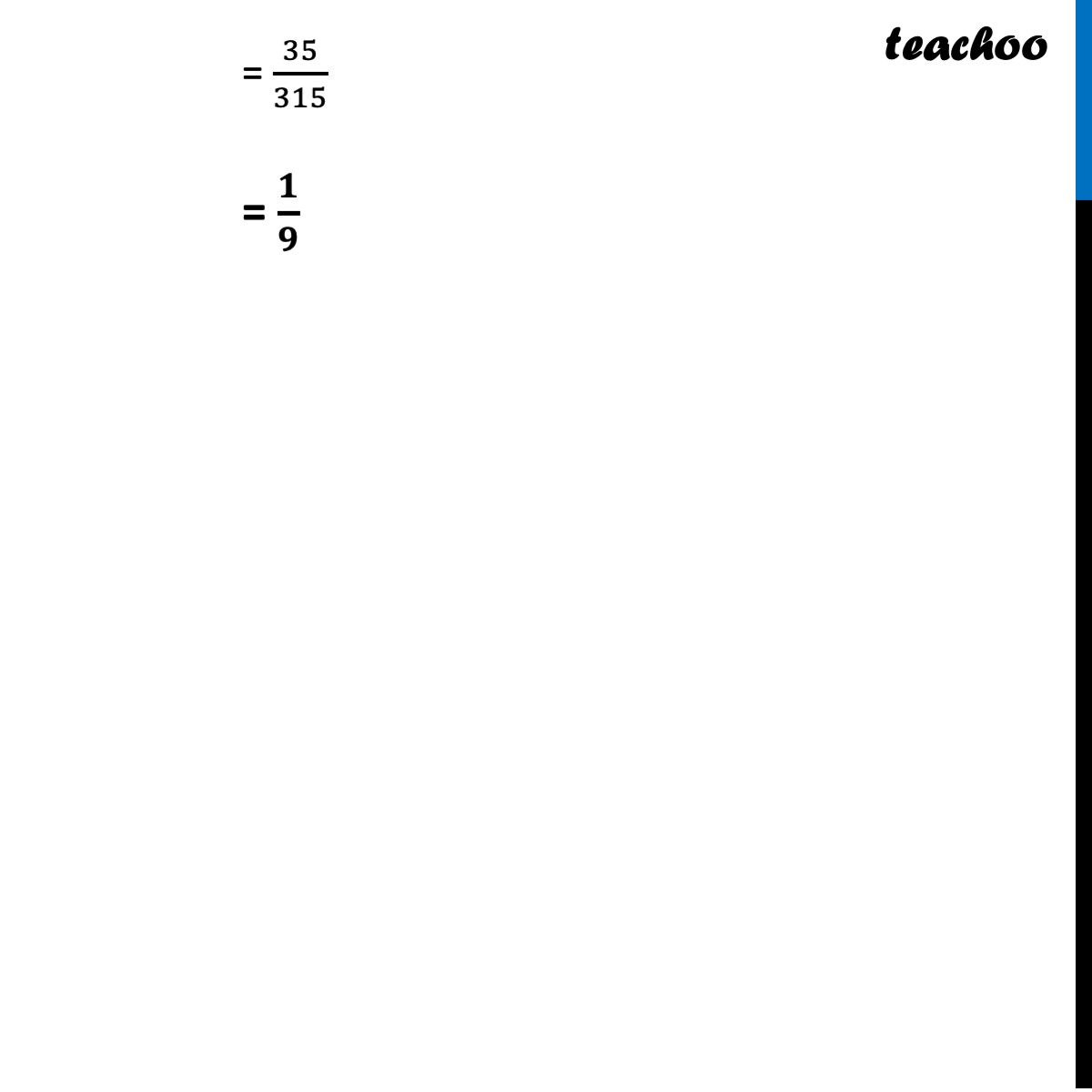
CBSE Class 12 Sample Paper for 2025 Boards
CBSE Class 12 Sample Paper for 2025 Boards
Last updated at February 13, 2025 by Teachoo






Transcript
Question 38 (Case Based Questions) Arka bought two cages of birds: Cage-I contains 5 parrots and 1 owl and Cage -II contains 6 parrots. One day Arka forgot to lock both cages and two birds flew from Cage-I to Cage-II (simultaneously). Then two birds flew back from cage-II to cage-I(simultaneously). Assume that all the birds have equal chances of flying. Question 38 (ii) When two birds flew from Cage-I to Cage-II and two birds flew back from Cage-II to Cage-I, the owl is still seen in Cage-I, what is the probability that one parrot and the owl flew from Cage-I to Cage-II? Since we already know that owl is in Cage 1, and then finding probability that one parrot and the owl flew from Cage-I to Cage-II So, We know an event has happened, and now finding probability. Thus, we use Bayes Theorem Let A be the event that “1 parrot & the owl flew from Cage I to Cage II” Let B be the event that “the owl is still in Cage I after the entire process.” We want to find the conditional probability P(A|B) , i.e., the probability that one parrot and the owl flew from Cage I to Cage II, given that the owl is still in Cage I after the entire process. Bayes’ Theorem gives us the formula: P(A|B) = 𝑷(𝑨⋂▒𝑩)/(𝑷(𝑩)) Where: P(B) is the probability that the owl is still in Cage I after the process. P(A ⋂ B) is the probability that one parrot and the owl flew from Cage I to Cage II AND that owl is still in Cage 1 i.e. P(A ⋂ B) is the probability that one parrot and the owl flew from Cage I to Cage II AND owl flew black Let’s calculate both Finding P(B) The total probability that the owl is still in Cage I after the process We calculated this in part (i) P(B) = 𝟑𝟏𝟓/𝟒𝟐𝟎 Finding P(A ⋂ B) P(A ⋂ B) is the probability that one parrot and the owl flew from Cage I to Cage II AND owl flew black This is same as situation 2 The owl flies to Cage II in the first move but returns to Cage I in the second move. Here, Since owl is flying from Cage 1, we choose 1 more bird We choose 1 birds out of remaining 5 birds from Cage 1 Since 2 birds have flown to Cage 2, Cage 2 has 6+2 = 8 birds now Since owl is flying back We choose 1 bird out of remaining 7 birds from Cage 2 Number of ways for Situation 2 = Choosing 1 birds out of remaining 5 birds × Choosing 1 birds out of 7 birds = 5C1 × 7C1 = 5 × 7 = 35 Thus, P(A ⋂ B) = (𝑁𝑢𝑚𝑏𝑒𝑟 𝑜𝑓 𝑤𝑎𝑦𝑠 𝑓𝑜𝑟 𝑆𝑖𝑡𝑢𝑎𝑡𝑖𝑜𝑛 2)/(𝑇𝑜𝑡𝑎𝑙 𝑛𝑢𝑚𝑏𝑒𝑟 𝑜𝑓 𝑤𝑎𝑦𝑠) = 𝟑𝟓/𝟒𝟐𝟎 Finding P(A|B) P(A|B) = 𝑷(𝑨⋂▒𝑩)/(𝑷(𝑩)) = (35/420)/(315/420) = 35/315 = 𝟏/𝟗